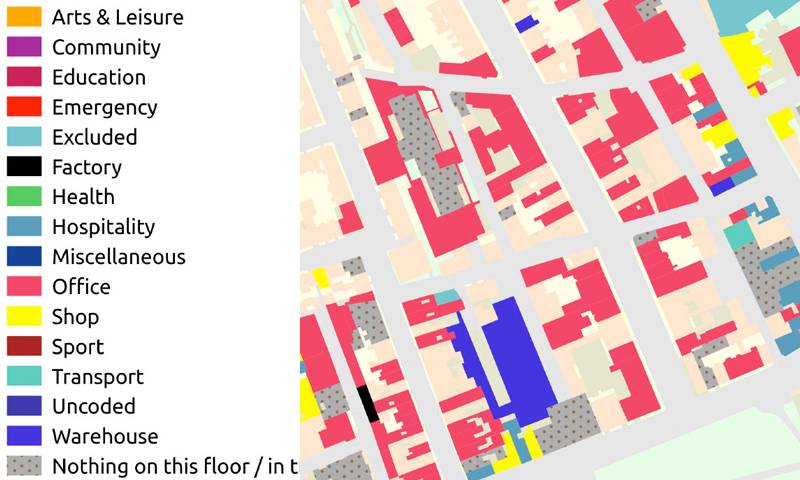Professor Philip Steadman on modelling every domestic and non-domestic building in London and its use of energy for the Greater London Authority (GLA).

As Emeritus Professor of Urban and Built Form Studies at The Bartlett’s Energy Institute, Steadman has been developing the 3DStock modelling method with colleagues for a number of years. His team have recently completed a project for the GLA, which will be used by the GLA and London boroughs to tackle fuel poverty and improve the energy efficiency of the capital’s building stock, both domestic and non-domestic. The London Building Stock Model contains detailed data – ages, heights, volumes, wall areas, the distribution of activities between different floors, construction materials and so on – on the great majority of separate dwellings and non-domestic premises in the 33 London boroughs.
The maps in the model also include all the information in Energy Performance Certificates (EPCs) and Display Energy Certificates. There have been maps of buildings’ EPCs before. “This time we’re linking EPCs with other information on buildings. And as only about half of properties have EPCs, we’ve created virtual ones,” he adds, “statistical estimates based on nearby properties of a similar character.”
The model allows users to define an area on a map and ask, for example, for all the information on offices over four storeys with steel construction. There are two versions of the model. One is for the GLA and carries more data and analytical facilities. Meanwhile a public website carrying less information will allow individuals to look at their own properties. “It’s a huge job.”
The model will also be used for scientific studies of issues including the use of energy by tall buildings. A team at the Energy Institute has shown in previous work that tall buildings are much more energy-intensive than low-rise. Steadman is planning a new project to try to understand why this is. He suggests that stronger winds, lower temperatures, and the fact that tall buildings are less overshadowed by neighbours, so get more sun, could play a part. “Because of their increased energy consumption, our hope is that this project will have an impact on the tall buildings that are allowed.”
In 2020, the team will add the London Solar Opportunity Map, which gives estimates of the potential of all roofs and areas of open land for solar photovoltaic installations. “We’re calculating the amount of solar radiation on every surface and the electricity that can be generated via PV panels.”
Steadman says one very hopeful development is that the price of renewables is falling dramatically. “They’re already competitive with fossil fuels in some parts of the world, and price will change everything.”
Along with Steadman, those responsible for the London Building Stock Model and the London Solar Opportunity Map are Stephen Evans, Daniel Godoy-Shimizu, Dominic Humphrey, Rob Liddiard, Ivan Korolija and Paul Ruyssevelt.
 Close
Close

